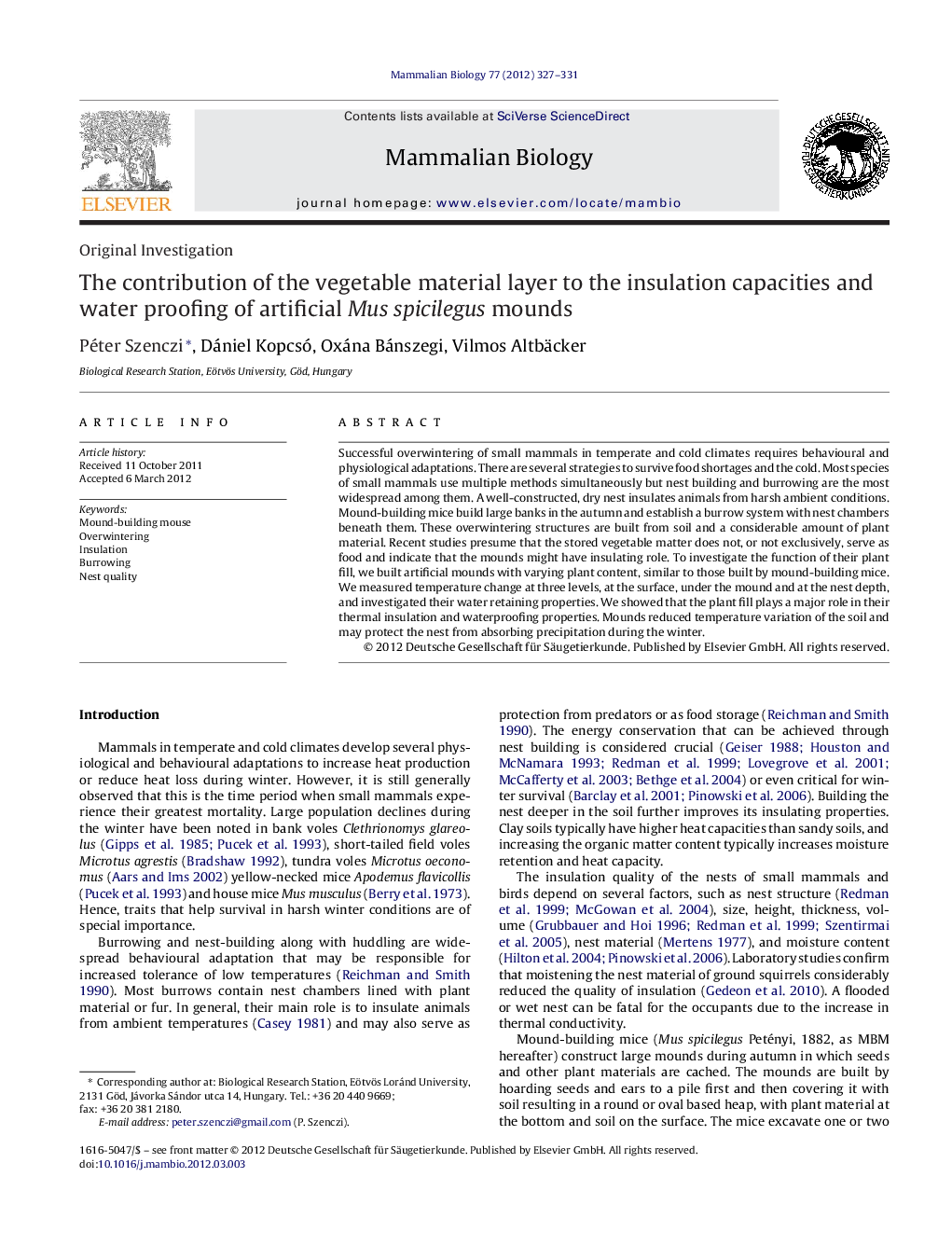| کد مقاله | کد نشریه | سال انتشار | مقاله انگلیسی | نسخه تمام متن |
|---|---|---|---|---|
| 2193840 | 1098402 | 2012 | 5 صفحه PDF | دانلود رایگان |

Successful overwintering of small mammals in temperate and cold climates requires behavioural and physiological adaptations. There are several strategies to survive food shortages and the cold. Most species of small mammals use multiple methods simultaneously but nest building and burrowing are the most widespread among them. A well-constructed, dry nest insulates animals from harsh ambient conditions. Mound-building mice build large banks in the autumn and establish a burrow system with nest chambers beneath them. These overwintering structures are built from soil and a considerable amount of plant material. Recent studies presume that the stored vegetable matter does not, or not exclusively, serve as food and indicate that the mounds might have insulating role. To investigate the function of their plant fill, we built artificial mounds with varying plant content, similar to those built by mound-building mice. We measured temperature change at three levels, at the surface, under the mound and at the nest depth, and investigated their water retaining properties. We showed that the plant fill plays a major role in their thermal insulation and waterproofing properties. Mounds reduced temperature variation of the soil and may protect the nest from absorbing precipitation during the winter.
Journal: Mammalian Biology - Zeitschrift für Säugetierkunde - Volume 77, Issue 5, September 2012, Pages 327–331